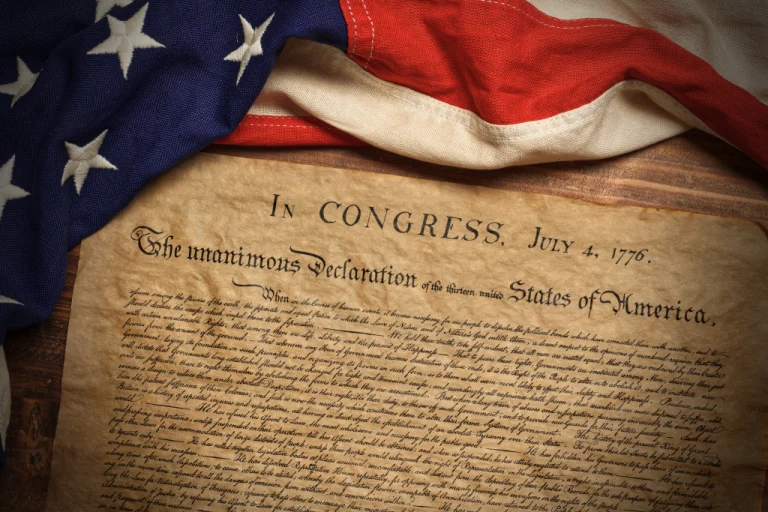Declaration of Independence: Everything To Know

The Declaration of Independence, approved by the Continental Congress on July 4, 1776, marked a momentous turning point in the history of the thirteen North American British colonies. Let’s delve into the key aspects of this foundational document.
Background and Purpose
- The Declaration was drafted by a committee consisting of Thomas Jefferson, John Adams, Benjamin Franklin, Roger Sherman, and Robert R. Livingston.
- The American colonies had been engaged in armed conflict with Great Britain for over a year, and also sentiments for independence were growing.
Key Principles and Influences
- Enlightenment Ideas:
- The Declaration drew heavily from Enlightenment philosophy, emphasizing natural rights, reason, and individual liberty.
- John Locke’s ideas on government by consent and the right to rebel influenced the document.
- Thomas Jefferson’s Language:
- Thomas Jefferson, the primary author, crafted eloquent prose that also resonated with the spirit of the times.
- His opening lines—“When in the Course of human events…”—are iconic.
- The Pursuit of Happiness:
- The inclusion of the pursuit of happiness as an unalienable right was groundbreaking.
- It also reflected the belief that individuals should have the freedom to seek fulfillment and self-improvement.
- The Declaration inspired the American Revolution and galvanized the fight for independence.
- Its principles continue to shape American democracy and human rights discourse.

Some key points about their objections:
- Edmund Randolph:
- On September 10, 1787, Randolph raised objections related to the provisions for ratifying the new Constitution.
- He disliked the removal of a phrase from the draft that would have required Congress approval before submitting it to state conventions.
- Randolph also believed that state ratifying conventions should have the power to propose amendments.
- Later, he expressed concerns about inadequate provisions for limiting the power of the executive and legislature.
- George Mason and Elbridge Gerry:
- On September 12, 1787, Mason and Gerry suggested that Randolph’s concerns could be resolved by also adding a Bill of Rights to the Constitution.
- However, this motion was rejected by all state delegations present.
- Mason and Gerry joined Randolph in expressing further concerns on September 15, 1787.

